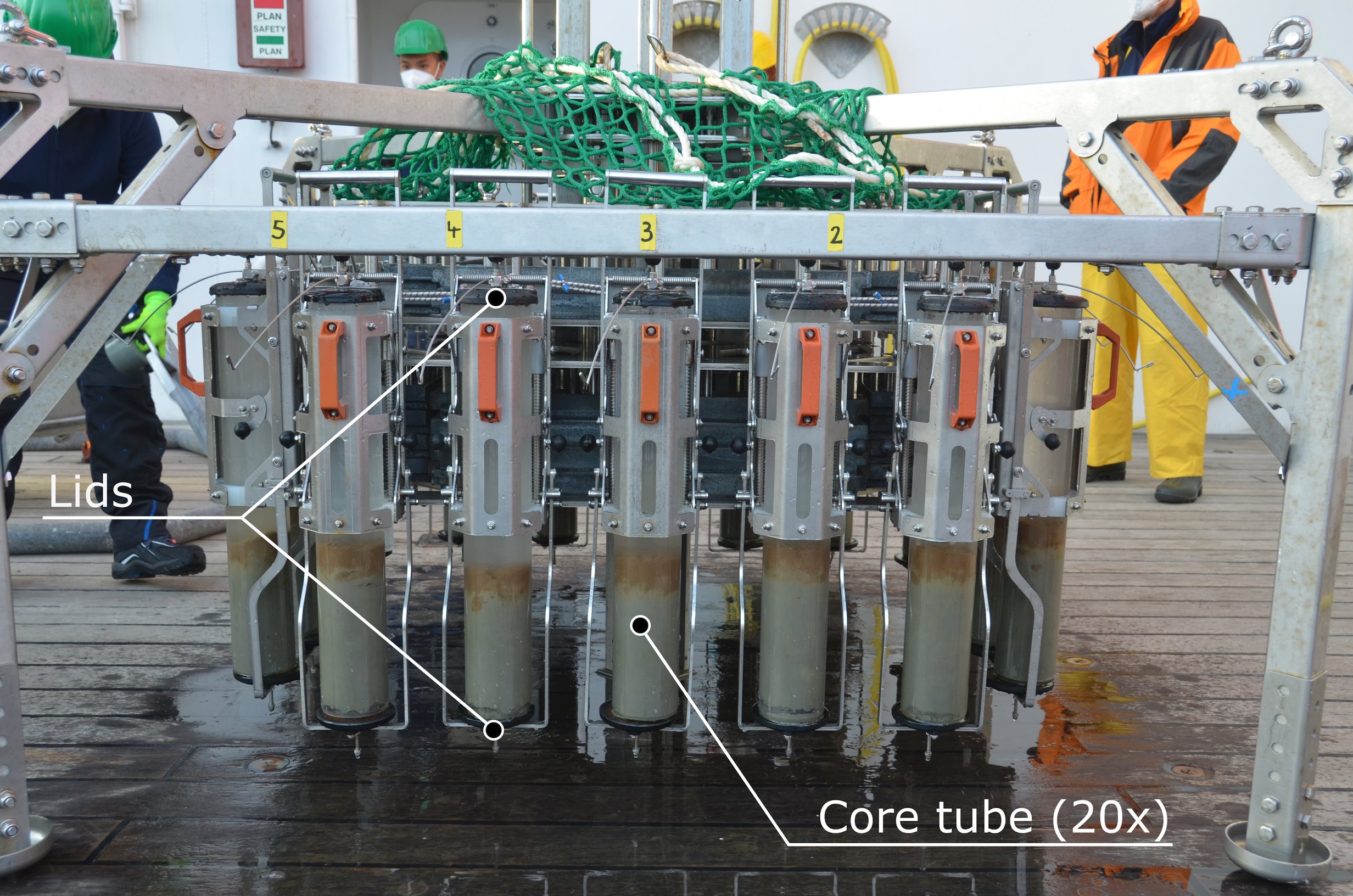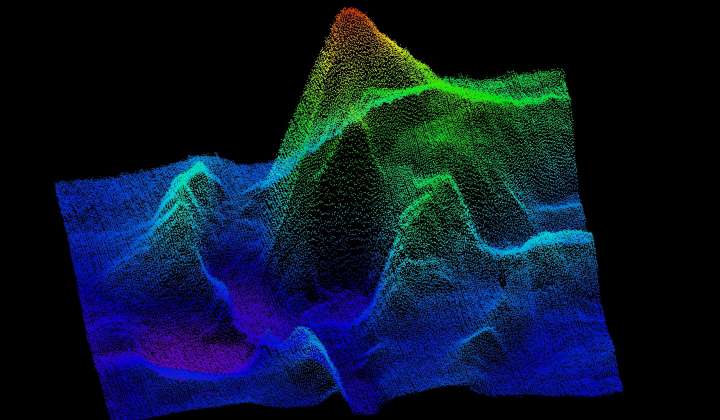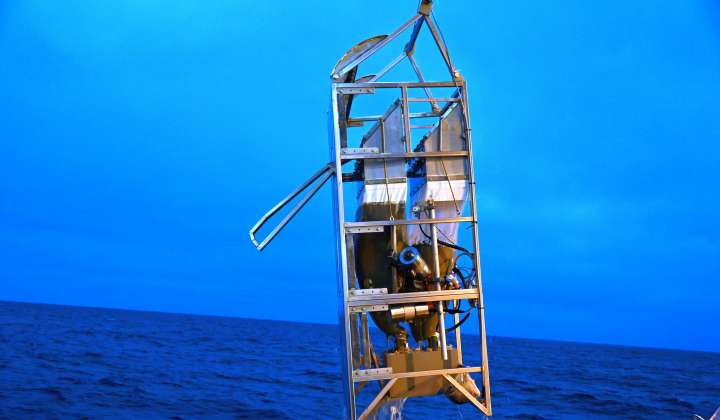
Gear construction: 20 polycarbonate core tubes mounted to a steel frame, one upper and one lower lid per tube as well as a hydraulic damper and a mechanical closure mechanism
Dimensions: 1.9 x 1.9 x 1.7 m
Weight: ~ 1 t
Deployment: The equipment is lowered from the surface down to 50 m above sea floor at a speed of 0.7 to 1 m/s. The MUC needs to be dropped straight into the superficial sediment, therefore it stops for 1 min at 50 to 100 m above sea floor and then lowering proceeds at a rate of 0.1 to 1 m/s to penetrate the sediment. The hydraulic damper system helps the tubes to penetrate the sediment slowly with minimal perturbance of the sediment surface. When the frame arrives the seafloor, the coring head descends slowly (by weight), against the resistance of the hydraulic damper. When the head encounters sufficient resistance with the pull of retrieval, the mechanical trigger activates the release of the closure mechanisms. On retrieval, both the upper and lower lids of the MUC close. The bottom lids close the bottom of the core tubes as the head is pulled back out of the sediment by the ship’s winch, slowly taking up the tension to return the multi corer onboard. The rate of ascent is 1 m/s. Back on deck, the core tubes are removed from the support frame. After opening the cover that retains the tube, making sure that the upper lid is replaced by a stopper, a spatula placed firmly in place between the lower lid and the sediment, and the core tube is gently extracted and placed in a bottom stopper and closed. The sediment of each core can be transported to the lab in a cannister. After each sampling, the MUC is rinsed thoroughly with fresh water to avoid sediment drying in between the moving parts that might affect future sampling.
Maximum Depth: Full Ocean Depth
Follow-up work: To process the sediment core in the laboratory, the overlying water is extracted, the sediment extruded and sliced in different sediment layers onboard, in a cold room or in natural environmental conditions. This action is aided by an extruder, a stamp pushing the core upwards through the tube, and a spatula. The sediment is sliced and placed in jars with the help of a funnel.
Samples / Results: Undisturbed soft sediment samples, including its overlying water and biota in the sediment. The samples provide material for describing the integrative taxonomy of the biodiversity contained in the top 10 cm of the sediment including the foraminifera, and quantitative ecological description, environmental sediment e-DNA, the characterization of the bottom water and sediment environmental geological, biogeochemical variables (grain size analysis, degraded pigments deposited on the sediment surface, organic matter content, etc.), and some processes (e.g. oxygen consumption and other microbiological defined).
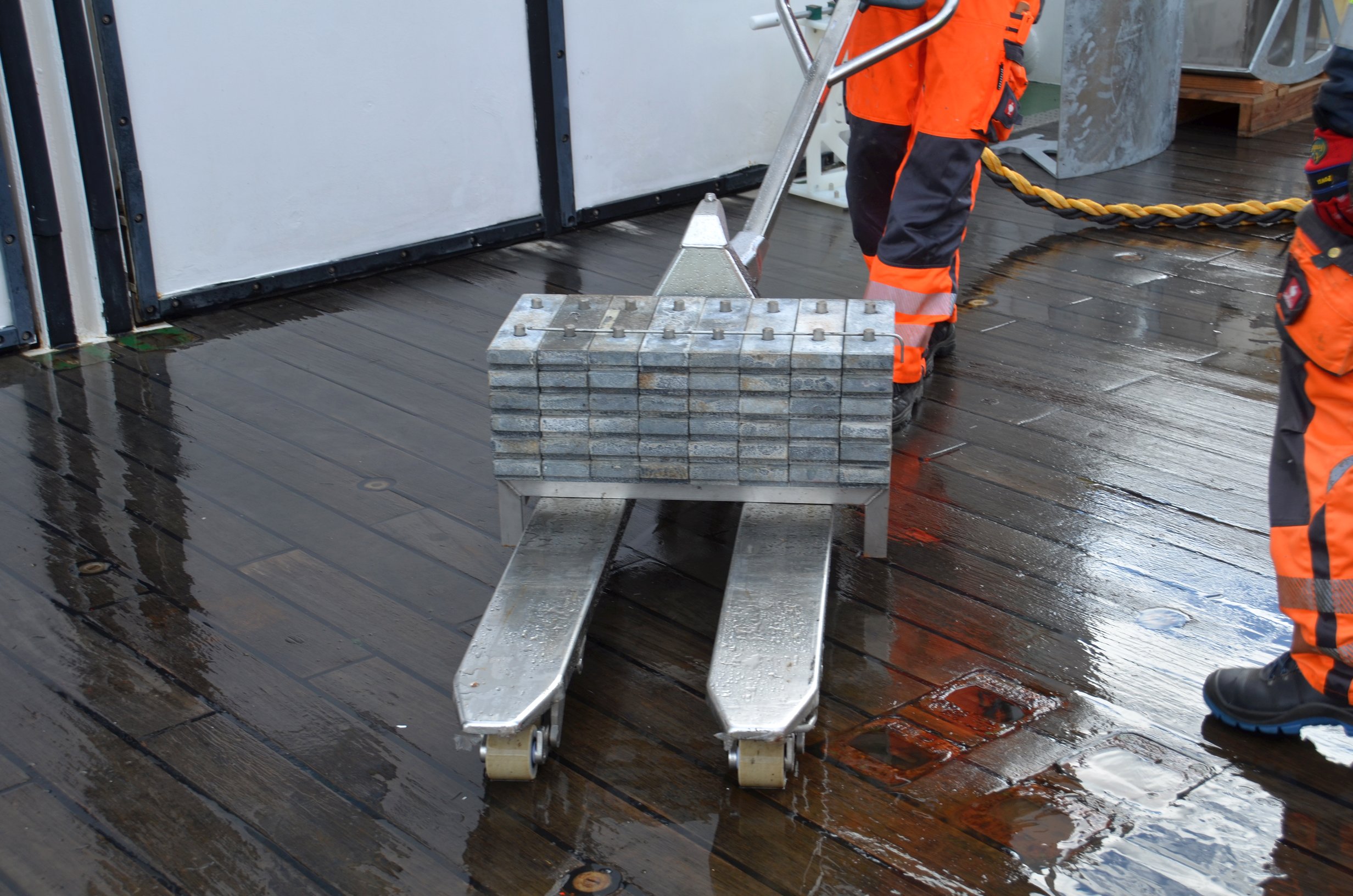
One weight weighs about 8.5 kg. 48 pieces are used in the MUC.




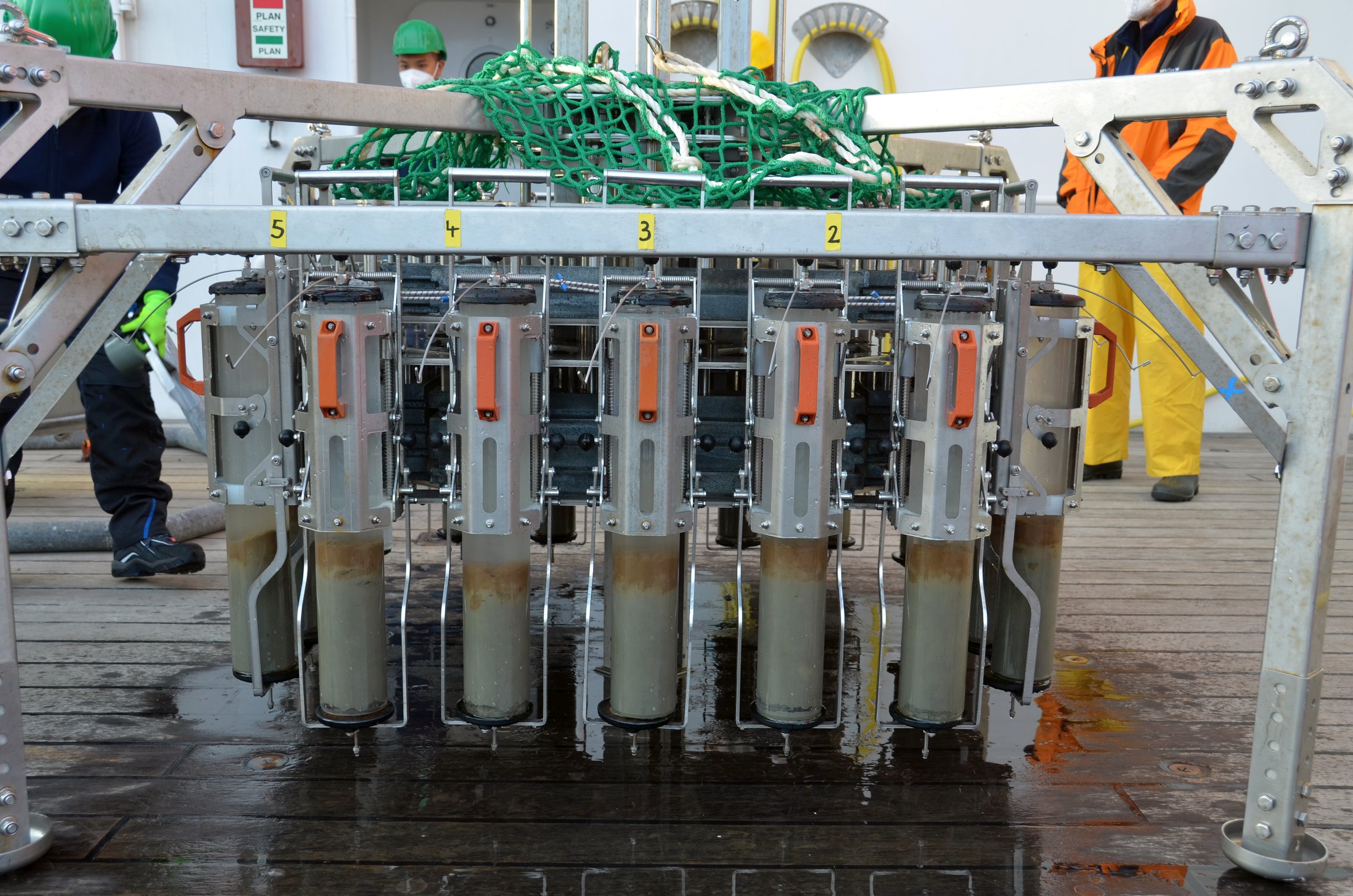
More about the MUC, in the Blog: What goes down, has to come up again
